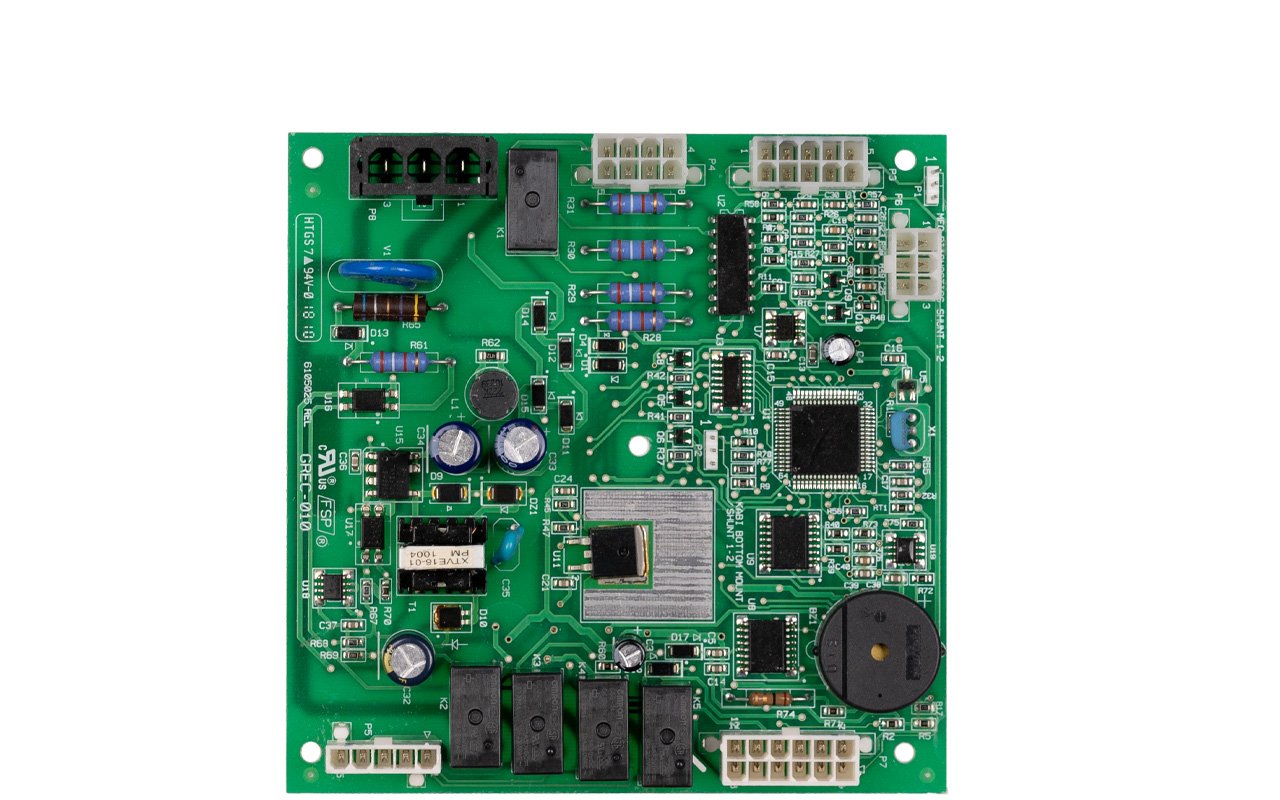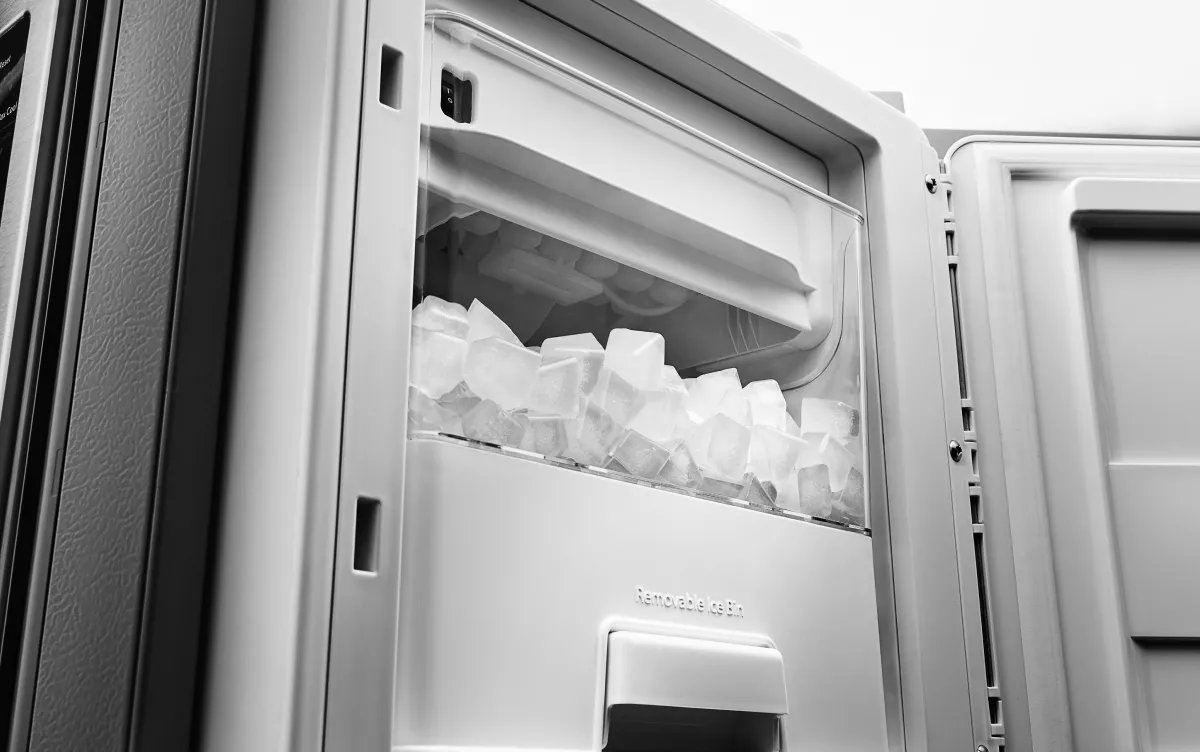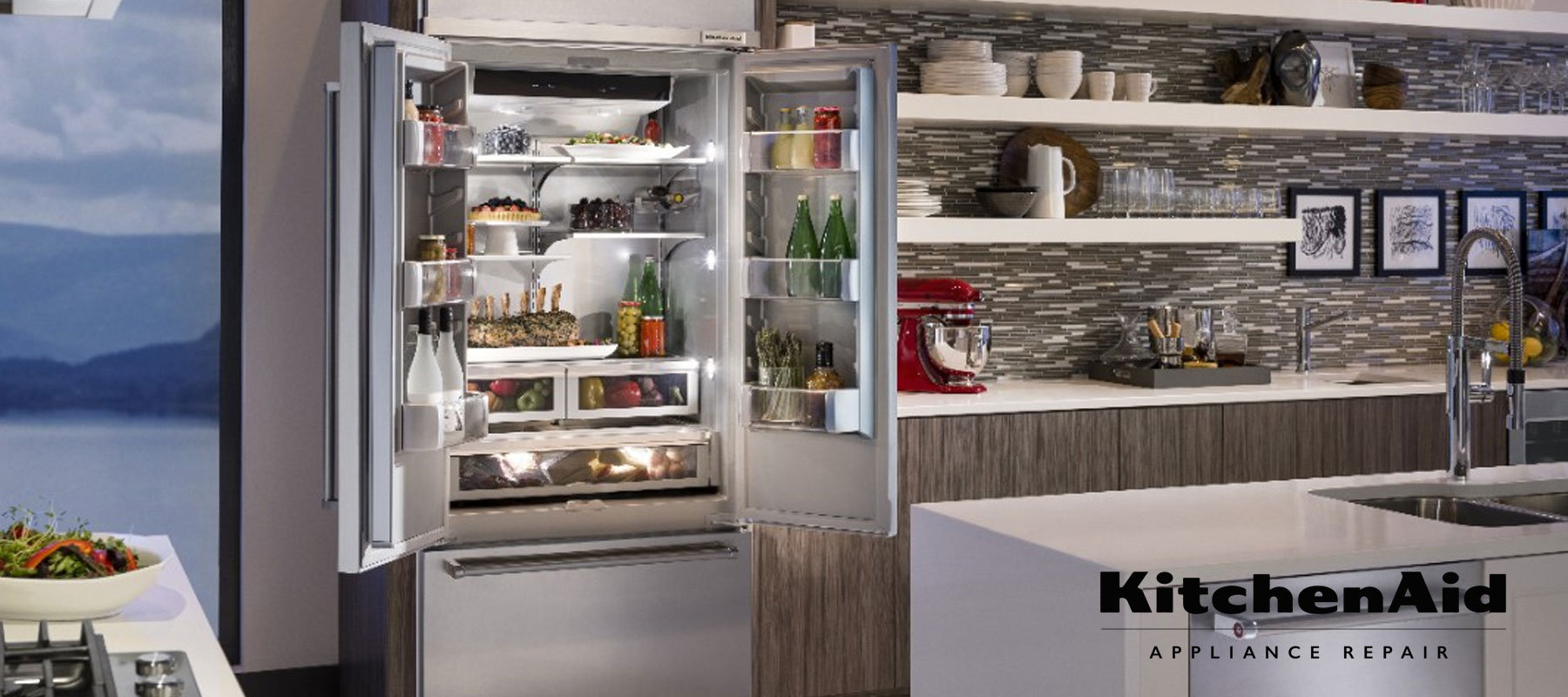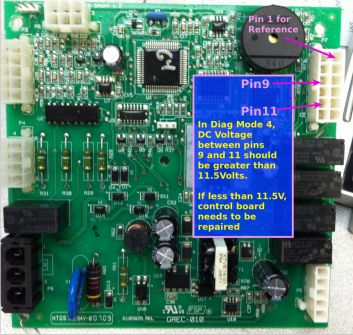
If you are experiencing problems with your Kitchenaid refrigerator control board, troubleshooting is essential. We will provide you with accurate and concise information on how to identify and resolve issues with your refrigerator’s control board.
This troubleshooting guide will assist you in understanding common problems and provide you with the necessary steps to get your refrigerator back up and running efficiently. Read on to learn more about troubleshooting your Kitchenaid refrigerator control board.

Credit: www.kitchenaid.com
Common Control Board Problems
Kitchenaid refrigerator control board troubleshooting can be a daunting task. Common issues include power problems, unresponsive buttons, and temperature control malfunction. Trust our expert advice to quickly diagnose and fix these control board problems.
Refrigerator Not Cooling Properly
One of the most frequent control board problems in KitchenAid refrigerators is inadequate cooling. If you notice that your refrigerator is not reaching the desired temperature, there may be an issue with the control board.
This problem can be caused by various factors, such as a malfunctioning thermostat or a faulty defrost system. When the control board is not functioning correctly, it can disrupt the cooling cycle and prevent the refrigerator from cooling as it should.
To troubleshoot this problem, you can try a few simple steps:
- First, check the temperature settings on your refrigerator to ensure they are set to the proper level. The recommended temperature for the refrigerator compartment is between 37 to 40 degrees Fahrenheit (3 to 4 degrees Celsius).
- Next, make sure there are no obstructions blocking the vents inside the refrigerator. Blocked vents can prevent cold air from circulating properly and cause uneven cooling.
- If the above steps do not resolve the issue, it may be necessary to inspect the control board for any visible signs of damage or burnt components. In such cases, it is recommended to contact a professional technician to assess and repair the control board.
Lights Not Working
Another common control board problem with KitchenAid refrigerators is the malfunctioning of the lights inside the refrigerator. If you find that the lights are not turning on when you open the refrigerator door, it could be due to a faulty control board.
To troubleshoot this issue, you can try the following:
- Check the light bulbs to ensure they are not burned out. Replace any faulty bulbs with new ones.
- Inspect the light switch to ensure that it is functioning properly. If necessary, consider replacing the switch.
- If the light bulbs and switch are in working condition, then it may be necessary to examine the control board. Look for any visible signs of damage or loose connections. If you are not comfortable doing this yourself, it is advisable to contact a professional technician.
Ice Dispenser Not Functioning
If your KitchenAid refrigerator’s ice dispenser is not dispensing ice, it could be due to a control board problem. The control board controls the motor and other components responsible for ice dispensing.
To troubleshoot this problem, you can try the following steps:
- Check if the ice bin is properly installed and not jammed. Sometimes, a misaligned or obstructed ice bin can prevent the ice dispenser from functioning correctly.
- Ensure that the ice maker is turned on and producing ice. If the ice maker is not working, it may indirectly affect the ice dispenser.
- Inspect the control board for any signs of damage or loose connections. If you notice any issues, it is recommended to seek professional assistance in repairing or replacing the control board.
Display Panel Not Responding
If you find that the display panel on your KitchenAid refrigerator is not responding or displaying incorrect information, it may be an indication of a control board problem. The control board communicates with the display panel, allowing you to select settings and monitor the refrigerator’s functions.
To troubleshoot this issue, follow these steps:
- Reset the display panel by unplugging the refrigerator for a few minutes and then plugging it back in. This can sometimes resolve temporary issues.
- Check if the control board is properly connected to the display panel. Loose or disconnected wires can cause communication problems.
- If the above steps do not resolve the issue, inspect the control board for any visible signs of damage or burnt components. In such cases, it is advisable to consult a professional technician to repair or replace the control board.

Credit: kitchenaid-appliance-repair-professionals.com
Troubleshooting And Solutions
In this section, we will discuss some common troubleshooting steps and solutions for Kitchenaid refrigerator control board issues. By following these steps, you can potentially save time and money by fixing the problem yourself.
Checking Power Supply
The first step in troubleshooting a Kitchenaid refrigerator control board is to check the power supply. Sometimes, a power outage or a tripped circuit breaker can cause the control board to malfunction. Follow these steps to check the power supply:
- Ensure that the refrigerator is plugged into a working electrical outlet.
- Check if there is power in the outlet by plugging in another electronic device.
- If the outlet is working, check if the circuit breaker for the refrigerator is tripped. Reset it if necessary.
If the power supply is not the issue, move on to the next troubleshooting step.
Resetting The Control Board
If the control board is unresponsive or behaving erratically, resetting it may resolve the issue. Here’s how to reset the control board:
- Locate the control board. In most Kitchenaid refrigerators, the control board is located at the back of the unit.
- Unplug the refrigerator from the power outlet or flip the circuit breaker to turn off the power.
- Wait for a few minutes to allow the control board to reset.
- Plug the refrigerator back in or flip the circuit breaker to restore power.
- Observe if the control board is now functioning properly. If not, proceed to the next troubleshooting step.
Inspecting For Faulty Wires Or Connections
Faulty wires or loose connections can cause issues with the control board. Follow these steps to inspect for faulty wires or connections:
- Disconnect the power supply by unplugging the refrigerator or turning off the circuit breaker.
- Carefully examine the wires and connections connected to the control board.
- Look for any visible signs of damage, such as frayed wires or loose connections.
- If you identify any issues, take appropriate measures to repair or replace the faulty wires or connections.
- After making any repairs, reconnect the power supply and test if the control board is functioning correctly.
Replacing The Control Board
If the previous troubleshooting steps did not resolve the issue, it may be necessary to replace the control board. Here’s how:
- Make sure you have a compatible replacement control board for your specific Kitchenaid refrigerator model.
- Disconnect the power supply by unplugging the refrigerator or turning off the circuit breaker.
- Locate the control board and carefully disconnect the wires and connections connected to it.
- Remove the control board from its mounting bracket or housing.
- Install the new control board by following the reverse steps of removing the old one.
- Reconnect the wires and connections to the new control board.
- Reconnect the power supply to the refrigerator.
- Test if the new control board is functioning properly.
By troubleshooting and following these steps, you can potentially resolve your Kitchenaid refrigerator control board issues. Remember to always prioritize safety and consult a professional if needed.

Credit: blog.fixyourboard.com
Frequently Asked Questions For Kitchenaid Refrigerator Control Board Troubleshooting
How Do I Know If My Kitchenaid Refrigerator Control Board Is Faulty?
To determine if your Kitchenaid refrigerator control board is faulty, check for common symptoms such as the fridge not cooling properly, the display being unresponsive, or strange error codes appearing. If you experience any of these issues, it’s likely that the control board needs troubleshooting or replacement.
Can I Troubleshoot My Kitchenaid Refrigerator Control Board Without Professional Help?
Yes, you can troubleshoot your Kitchenaid refrigerator control board without professional help by following some simple steps. Start by checking the power supply, ensuring the control board is correctly connected, and resetting the board. If the issue persists, you may need to consult the manual or reach out to Kitchenaid’s customer support for further guidance.
What Are Some Common Causes For A Malfunctioning Kitchenaid Refrigerator Control Board?
Several factors can result in a malfunctioning Kitchenaid refrigerator control board. Some common causes include power surges, water damage, faulty wiring, or excessive temperature fluctuations. It’s important to identify the underlying issue to effectively troubleshoot or replace the control board and prevent future problems.
Should I Repair Or Replace My Faulty Kitchenaid Refrigerator Control Board?
Whether you should repair or replace your faulty Kitchenaid refrigerator control board depends on the extent of the damage and the cost of repair. If the repair cost exceeds the price of a new control board, it’s generally recommended to replace it.
Consider consulting a professional for an assessment to make an informed decision.
Conclusion
Troubleshooting the control board of a Kitchenaid refrigerator can save you time and money. By following the steps outlined in this post, such as checking for power supply issues and ensuring proper connections, you can identify and resolve common problems.
Remember to consult the user manual or seek professional assistance if needed. Keep your refrigerator running smoothly for years to come!






